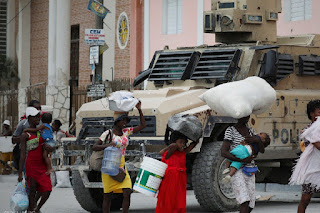The United Nations' ‘Pact for the Future’: A Blueprint to Tackle 21st Century Challenges
On Sunday, the United Nations General Assembly made a historic decision by approving the 42-page “Pact for the Future,” marking a monumental step toward addressing some of the most pressing issues of the 21st century. The pact, adopted at the opening of the “Summit of the Future,” seeks to unite the increasingly divided nations of the world in a bid to solve challenges ranging from climate change and artificial intelligence to global conflicts, rising inequality, and rampant poverty.
A Call for Collective Action
The “Pact for the Future” is not just a document of words but a call to action. It challenges the leaders of the 193 UN member nations to move beyond promises and focus on real, measurable actions that will improve the lives of over 8 billion people. UN Secretary-General António Guterres praised the adoption of the pact and emphasized its importance in bringing "multilateralism back from the brink."
According to Guterres, the world is at a crossroads, and the stakes have never been higher. The need for collaboration has never been more urgent as nations face a litany of interconnected global crises. He stressed that the approval of the pact is a crucial first step, but its success depends on actual implementation.
According to Guterres, the world is at a crossroads, and the stakes have never been higher. The need for collaboration has never been more urgent as nations face a litany of interconnected global crises. He stressed that the approval of the pact is a crucial first step, but its success depends on actual implementation.
The Six Key Challenges
Guterres outlined six major areas that need immediate attention:
- Implement the Pact for the Future: Leaders must move swiftly to put the agreed actions into practice.
- Prioritize dialogue and negotiations: To solve global problems, nations need to talk to one another, despite differences.
- End global conflicts: The world is witnessing more armed conflicts than ever, and a peaceful resolution is paramount.
- Reform the UN Security Council: This has been a long-standing issue, but the time for change is now.
- Transition from fossil fuels: Climate change remains a dire threat, and rapid movement toward sustainable energy is essential.
- Involve youth in decision-making: The voices of younger generations must be amplified in shaping the future.
Overcoming Opposition
The pact’s journey to approval wasn’t without hurdles. Early on in the Summit, Russia, through Deputy Foreign Minister Sergey Vershinin, proposed amendments that would have significantly weakened the pact’s effectiveness. These amendments would have diluted the core provisions aimed at tackling some of the world’s most pressing challenges. However, a motion from the Republic of Congo, speaking on behalf of Africa’s 54 nations, to vote against the amendments received widespread support. With applause from other member nations, the motion was approved, demonstrating the collective will to maintain the pact’s integrity. Only a handful of countries – including Iran, North Korea, and Belarus – backed Russia's amendments.
Pioneering Global Digital and AI Governance
One of the most significant aspects of the pact is the Global Digital Compact, which includes the first truly universal agreement on the governance of artificial intelligence. This part of the pact focuses on promoting scientific understanding of AI and ensuring that its development is aligned with global ethical standards. The UN will now be establishing a dedicated panel to oversee AI governance, ensuring that this powerful technology is used for the betterment of humanity and not to deepen global divides.
Protecting Future Generations
Another major focus of the “Pact for the Future” is ensuring that future generations are not left to bear the brunt of today’s mistakes. The Declaration on Future Generations, one of the annexes accompanying the pact, emphasizes intergenerational justice and underscores the responsibility of today’s leaders to protect the rights of young people and future citizens of the world. It is a forward-thinking approach that aims to balance the needs of current populations with long-term sustainability.
Eradicating Poverty and Promoting Peace
The pact encompasses 56 actionable steps, with key priorities including eradicating poverty, promoting peace, and protecting civilians caught in conflict. As global inequality widens, the pact aims to provide a framework for addressing systemic poverty, which continues to affect millions worldwide. Coupled with this, the ongoing conflicts in various regions of the world remain a critical issue, and the pact calls for leaders to focus on peaceful resolutions.
.jpg)


Comments
Post a Comment